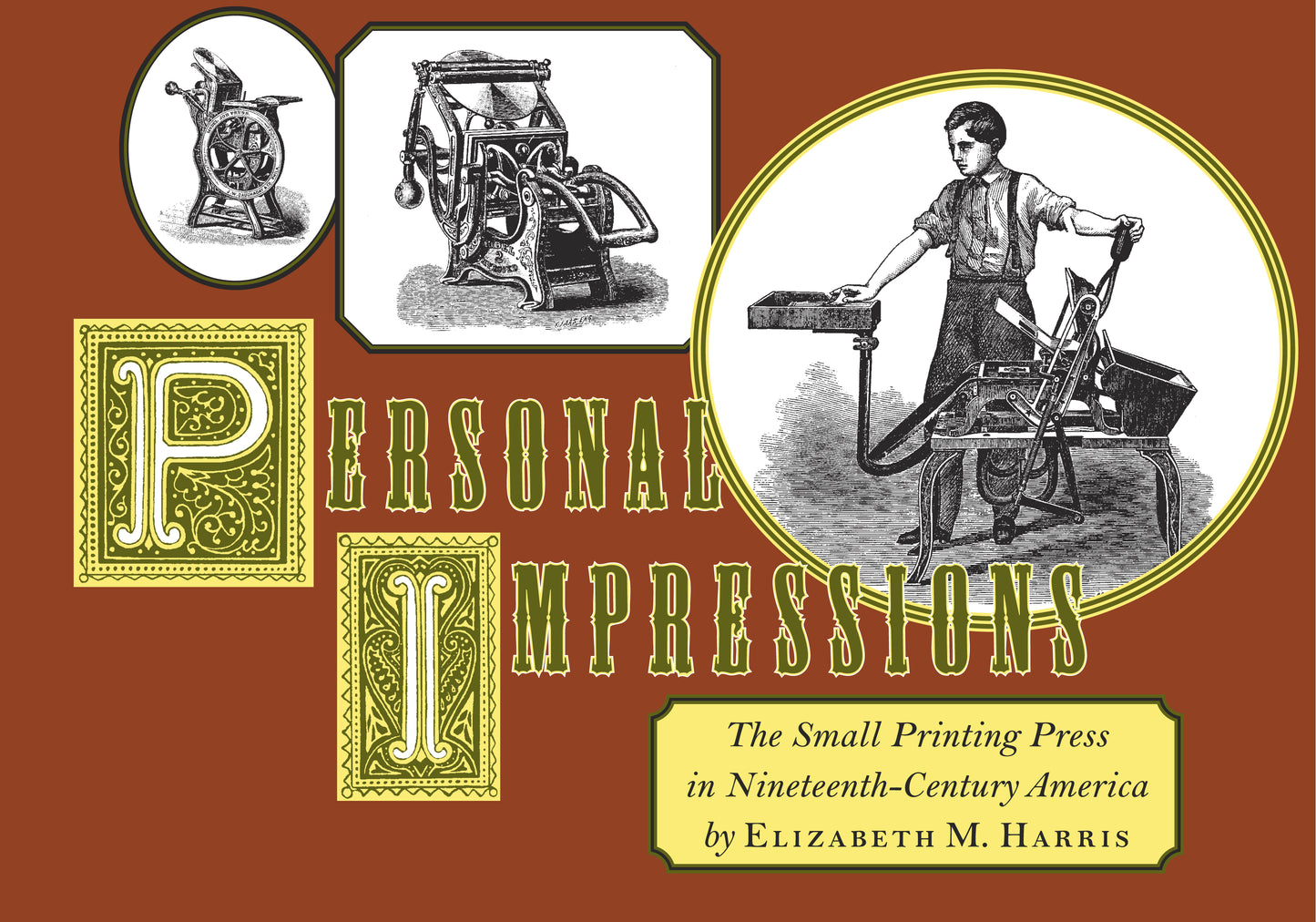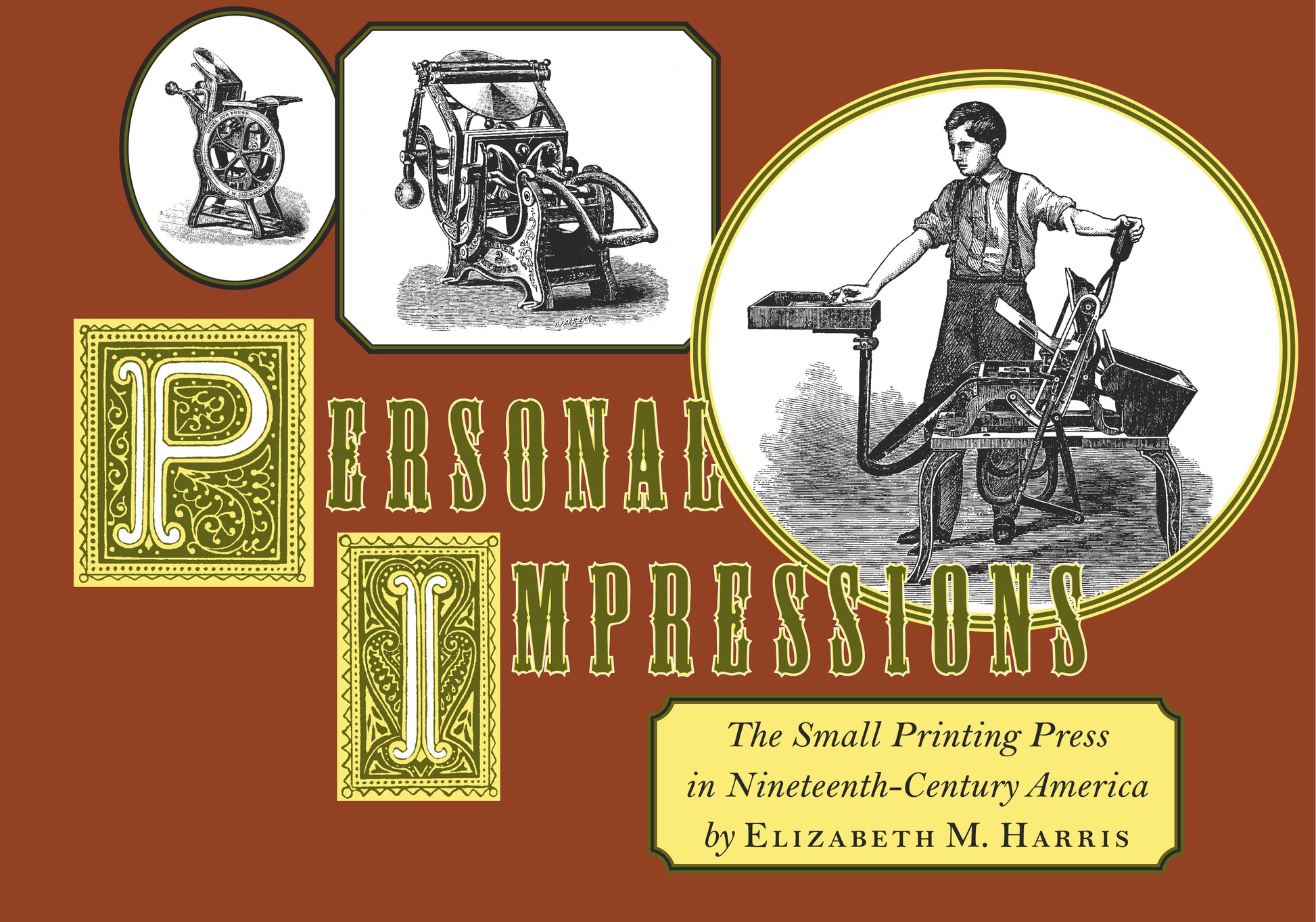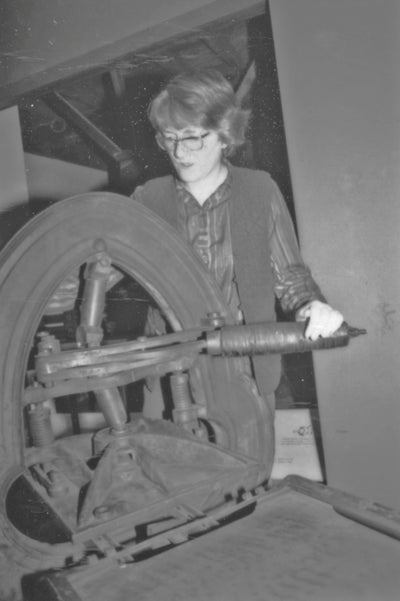
Printing was the most widespread, and competitive business of nineteenth-century America. Every city had not only its big presses for printing catalogues, books, and newspapers, but also countless smaller presses for printing small jobs – the pamphlets, posters, handbills, stationery, cards, and tickets that gave the century so much of its color. Several of the names we now count as giants of the publishing industry: Scribner, Doubleday, George Houghton of Houghton Mifflin, and Donald Brace of Harcourt Brace started out not as publishers, but as small-job printers, running their own shops and working humble, everyday, manually-operated presses.
This complete, definitive, and richly illustrated survey of small nineteenth-century printing presses, written by a former curator at the Smithsonian Institution, is the first history of these lovely, useful, and prodigiously varied machines. There was, in those days, a small printing press for every purpose. And there were innumerable boys and men eager to make their fortunes by investing in one, printing for a local clientele, and, with luck, building a printing or publishing empire.
What the desktop computer is to today, these small iron workhorses were to the nineteenth century, and this book, which catalogues, describes, and illustrates over a hundred small printing presses and their makers, giving machine specifications as well as patent information, is a mine of previously undocumented printing history. No one seriously interested in the story of American printing can afford to be without it.

